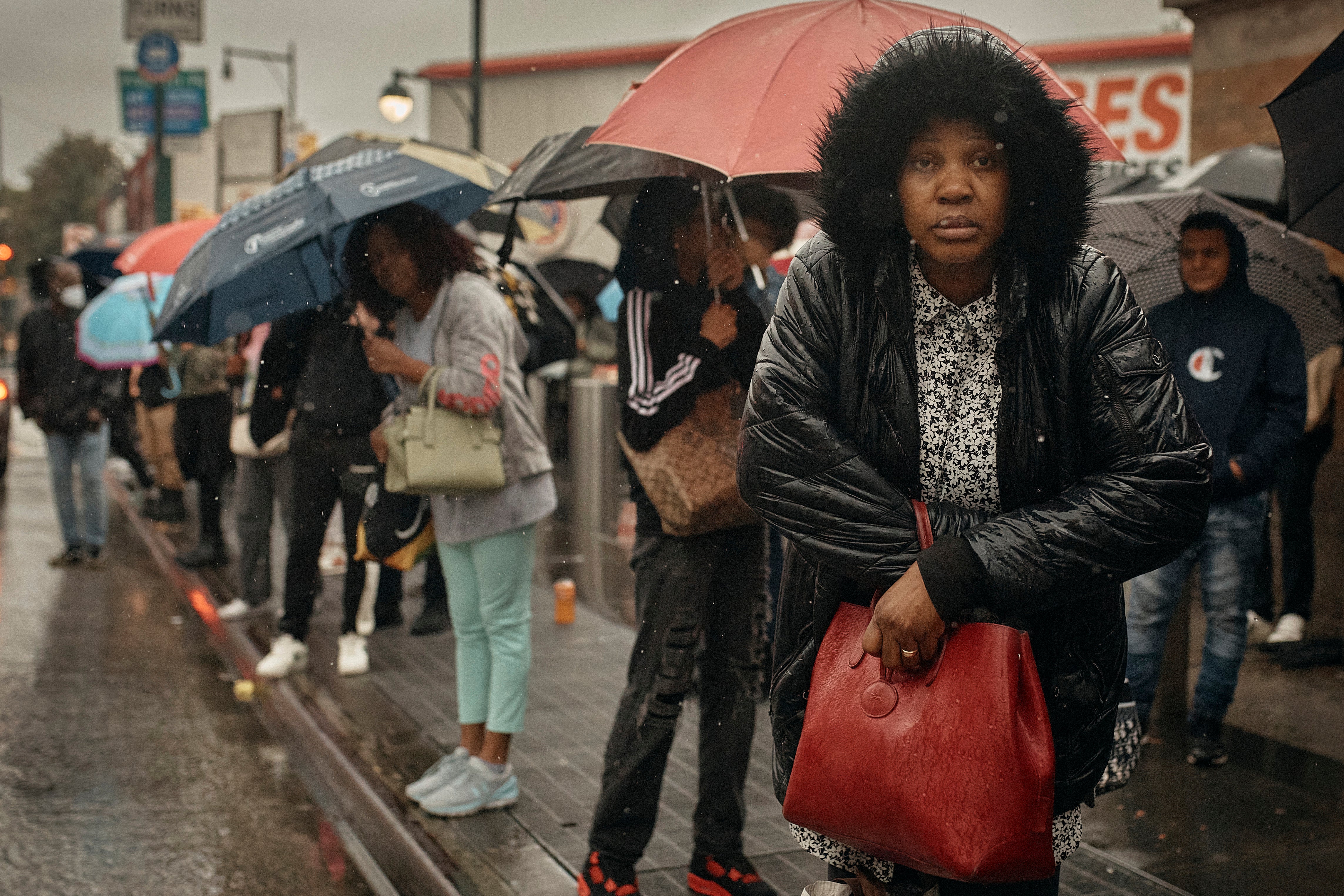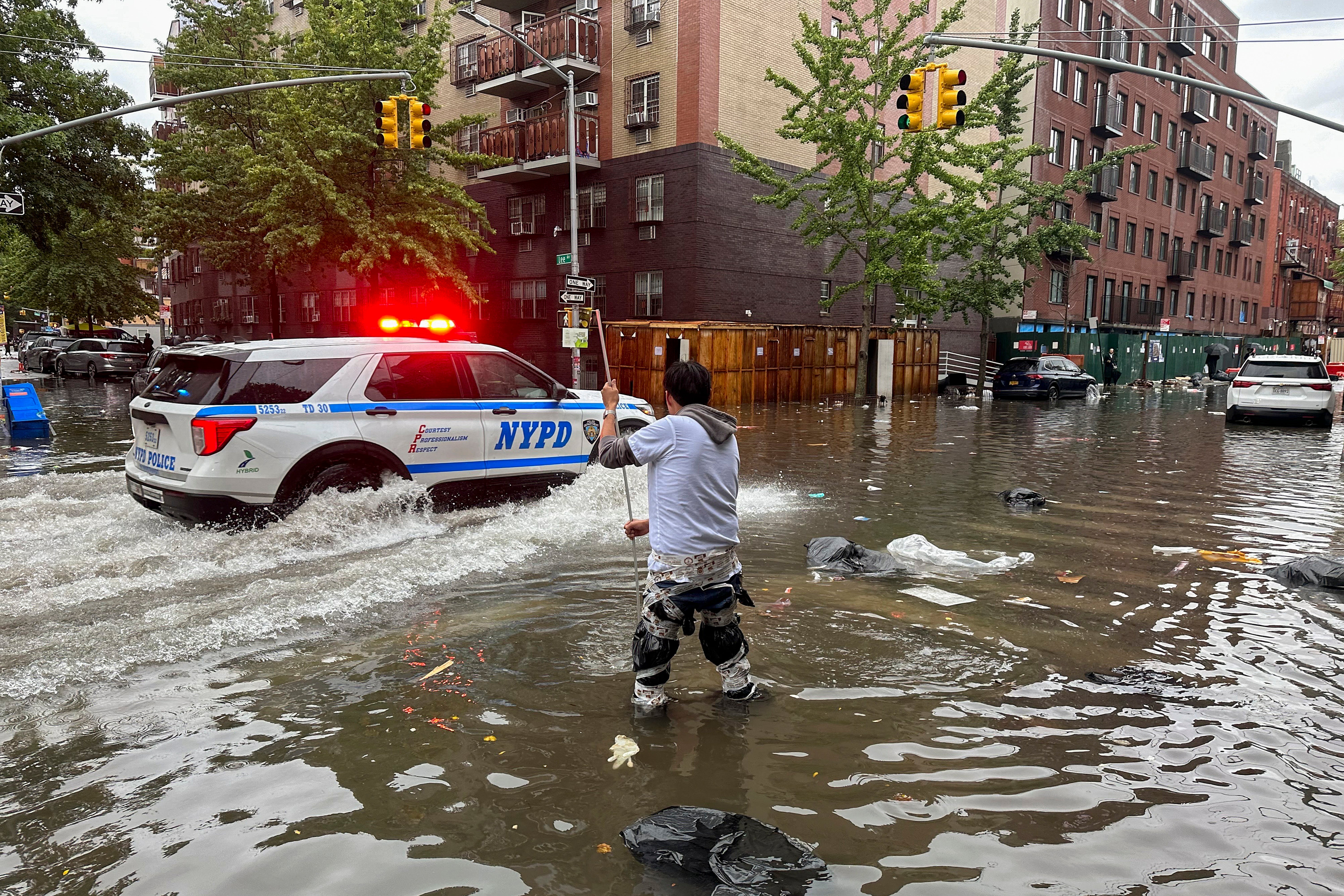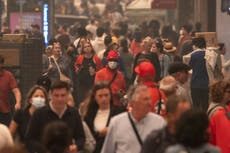New York’s violent rainfall ‘mostly strengthened’ by climate crisis as subway flood plans found insufficient
Operators of the New York subway system haven’t implemented a plan to make it more resilient, audit finds
The exceptionally violent rainfall which swamped parts of New York City last week was “mostly strengthened” by the climate crisis, according to a new rapid analysis.
The severe storm which struck New York and New Jersey led to one of the wettest days on record and caused widespread flooding.
Extreme rainfall in short periods of time are incredibly difficult to predict and manage. Part of Brooklyn received 2.58 inches of rain in one hour on Friday morning, overwhelming a 120-year-old sewer system built to handle 1.75in per hour.
The torrential rains caused chaos across the city, shutting down half the subway system, stranding drivers on highways and flooding homes and businesses. At Central Park Zoo, flooding allowed a sea lion to temporarily escape its overflowing enclosure.
These rainfall events are now 3-15 mm per day wetter than in the past, according to ClimaMeter, an experimental framework putting weather extremes into a climate perspective, developed by a team of European scientists.
The team compared rainfall events in New York over the past 20 years with what they looked like between 1979-2000.
While natural climate variability played a role, the scientists said that the event “may be mostly due to human-driven climate change” compared to storms of the past.
The frequency and intensity of heavy rainfall events are projected to increase almost everywhere in the United States in the coming decades, according to the latest report from the UN’s climate science body.
The world experienced its hottest summer on record in 2023. These higher temperatures, driven by burning fossil fuels, has made the global ocean nearly 1 degree hotter than 100 years ago. More heat in the ocean supercharges storms and packs them with more moisture, scientists say.

Torrential rains aren’t the only risk to New York as rising temperatures means more frequent and severe heatwaves, elevated storm surge risks, and chronic flooding from sea-level rise, the ClimaMeter assessment notes.
The latest warning comes as an audit of the Metropolitan Transportation Agency – responsible for New York’s public transport – found that it hasn’t implemented a plan to make the subway system more resilient to climate impacts.
New York City Transit projects, identified as priorities after Superstorm Sandy, were often incomplete, not finished on time or within budget, or insufficiently documented, New York state Comptroller Thomas DiNapoli said in a statement.

The subway system, along with commuter rail lines in the tri-state area, were heavily impacted by the most recent storm, with MTA officials urging people to stay home.
On Wednesday, the MTA released its 20-Year Needs Assessment which included adapting for climate change as a priority. “MTA infrastructure was not built to withstand these conditions,” it notes.
An unprecedented $55billion is being invested from 2020-2024, MTA reported, including on hardening infrastructure to climate threats while cutting the system’s emissions by 85 per cent.
Join our commenting forum
Join thought-provoking conversations, follow other Independent readers and see their replies
Comments


Bookmark popover
Removed from bookmarks